
The Legend of Zelda is an action-adventure game franchise created by the Japanese game designers Shigeru Miyamoto and Takashi Tezuka. It is primarily developed and published by Nintendo, although some portable installments and re-releases have been outsourced to Flagship, Vanpool, and Grezzo. Its gameplay incorporates action-adventure and elements of action RPG games.

The Legend of Zelda: Ocarina of Time is a 1998 action-adventure game developed and published by Nintendo for the Nintendo 64. It was released in Japan and North America in November 1998 and in PAL regions the following month. Ocarina of Time is the first game in The Legend of Zelda series with 3D graphics.

The Legend of Zelda: A Link to the Past is an action-adventure game developed and published by Nintendo for the Super Nintendo Entertainment System. It is the third game in The Legend of Zelda series and was released in 1991 in Japan and 1992 in North America and Europe.

The Legend of Zelda: The Wind Waker is an action-adventure game developed and published by Nintendo for the GameCube. An installment in The Legend of Zelda series, it was released in Japan on December 13, 2002, in North America on March 24, 2003, and in Europe on May 2, 2003.

The Monkey King or Sun Wukong is a fictional character best known as one of the main players in the 16th-century Chinese novel Journey to the West, and many later stories and adaptations. In the novel, Sun Wukong is a monkey born from a stone who acquires supernatural powers through Taoist practices. After rebelling against heaven, he is imprisoned under a mountain by the Buddha. After five hundred years, he accompanies the monk Tang Sanzang (唐三藏) riding on the White Dragon Horse and two other disciples, Zhu Bajie and Sha Wujing, on a journey to obtain Buddhist sutras from the West (India), where Buddha and his followers dwell.

The Legend of Zelda: Oracle of Seasons and The Legend of Zelda: Oracle of Ages are 2001 action-adventure games in the Legend of Zelda series. They were developed by Flagship and published by Nintendo for the Game Boy Color.
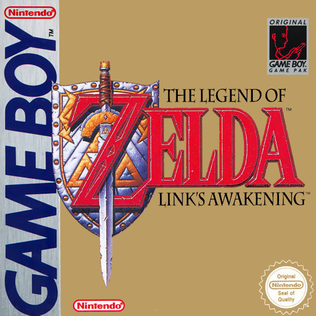
The Legend of Zelda: Link's Awakening is a 1993 action-adventure game developed and published by Nintendo for the Game Boy. It is the first installment in The Legend of Zelda series for a handheld game console. Link's Awakening is one of the few Zelda games not to take place in the land of Hyrule, and it does not feature Princess Zelda or the Triforce relic. Instead, the protagonist Link begins the game stranded on Koholint Island, a place guarded by a whale-like deity called the Wind Fish. Assuming the role of Link, the player fights monsters and solves puzzles while searching for eight musical instruments that will awaken the sleeping Wind Fish and allow him to escape from the island.
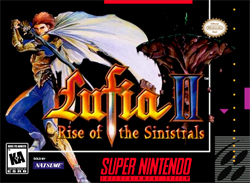
Lufia II: Rise of the Sinistrals, known as Estpolis Denki II in Japan, and as Lufia in Europe and Australia, is a role-playing video game with puzzle elements developed by Neverland and published in Japan in 1995 by Taito, and in North America and Europe in 1996 by Natsume and Nintendo respectively, for the Super Nintendo Entertainment System. It is the second game in the Lufia series.

Dungeon Keeper 2 is a strategy game developed by Bullfrog Productions and published by Electronic Arts in 1999 for Microsoft Windows. In the sequel to Dungeon Keeper, the player takes the role of a 'dungeon keeper', building and defending an underground dungeon from the would-be heroes that would invade it, as well as from other keepers. In the campaign mode, the player is charged with recovering the portal gems from each area in order to open a portal to the surface. The player can also construct a dungeon without strict objectives, and multiplayer is supported over a network.
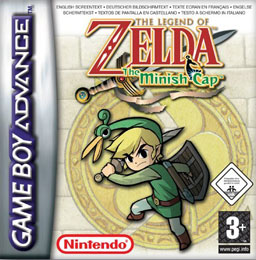
The Legend of Zelda: The Minish Cap is an action-adventure game and the twelfth entry in The Legend of Zelda series. Developed by Capcom and Flagship, with Nintendo overseeing the development process, The Minish Cap was released for the Game Boy Advance in Japan and Europe in 2004 and in North America and Australia the following year.
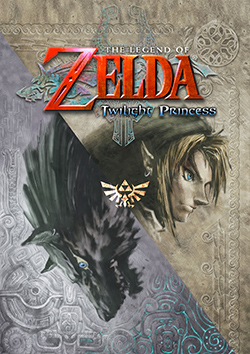
The Legend of Zelda: Twilight Princess is a 2006 action-adventure game developed and published by Nintendo for the GameCube and Wii. Originally planned for release exclusively on the GameCube in November 2005, Twilight Princess was delayed by Nintendo to allow its developers to refine the game, add more content, and port it to the Wii. The Wii version was a launch game in North America in November 2006, and in Japan, Europe, and Australia the following month. The GameCube version was released in December 2006 as the final first-party game for the console.

Nightmare Creatures is a 1997 survival horror video game developed by Kalisto Entertainment for PlayStation, Microsoft Windows and Nintendo 64. A sequel, Nightmare Creatures II, was released three years later. A mobile phone version of Nightmare Creatures was developed and published by Gameloft in 2003. A second sequel, Nightmare Creatures III: Angel of Darkness, was cancelled in 2004.
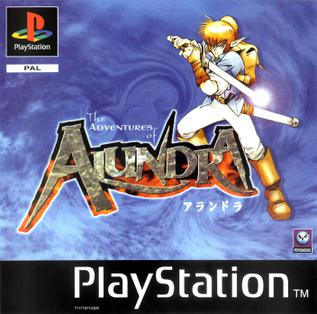
Alundra, released in Europe as The Adventures of Alundra, is an action-adventure video game developed by Matrix Software for the PlayStation, originally released in 1997.
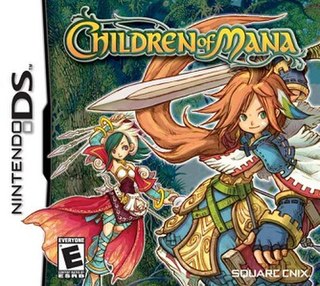
Children of Mana is a 2006 action role-playing game for the Nintendo DS handheld console. It was developed by Square Enix and Nex Entertainment, and published by Square Enix and Nintendo. It is the sixth game of the Mana series—following 2003's Sword of Mana—and the first entry in the World of Mana subseries. Set in a high fantasy universe, Children of Mana follows one of four young heroes as they combat an invasion of monsters and learn about the cataclysmic event that killed their families.

Dark Cloud is an action role-playing video game developed by Level-5 and published by Sony Computer Entertainment for the PlayStation 2. Originally intended as a launch title for the system in March 2000, the game was eventually released in Japan in December 2000, in North America in May 2001, and in Europe in September. A spiritual sequel, Dark Chronicle, was released in Japan in 2002 and worldwide the following year.
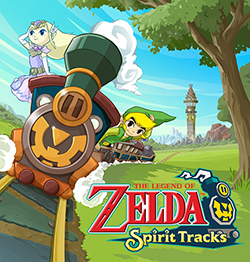
The Legend of Zelda: Spirit Tracks is a 2009 action-adventure game developed and published by Nintendo for the Nintendo DS handheld game console. Set a century after The Wind Waker and its sequel Phantom Hourglass, the storyline follows the current incarnations of Link and Princess Zelda as they explore the land of New Hyrule to prevent the awakening of the Demon King Malladus. Players navigate New Hyrule, completing quests that advance the story and solving environmental and dungeon-based puzzles, many requiring use of the DS's touchscreen and other hardware features. Navigation between towns and dungeons is done using a train, which features its own set of mechanics and puzzles.

King's Quest: Mask of Eternity is a hybrid point-and-click adventure and action-adventure video game developed and published by Sierra Studios in 1998. It was the eighth official game in the King's Quest series, the first and only game in the main series where the main character is neither King Graham nor a member of his family, as well as the first in the series to use a full 3D engine as opposed to the 2D cartoon or pixel style of the earlier games and the first to omit the sequel numbering system on box artwork and title screen.

The Legend of Zelda: Breath of the Wild is a 2017 action-adventure game developed and published by Nintendo for the Nintendo Switch and Wii U. Set at the end of the Zelda timeline, the player controls an amnesiac Link as he sets out to save Princess Zelda and prevent Calamity Ganon from destroying the world. Players explore the open world of Hyrule while they collect items and complete objectives such as puzzles or side quests. Breath of the Wild's world is unstructured and encourages exploration and experimentation; the story can be completed in a nonlinear fashion.

The Legend of Zelda: A Link Between Worlds is a 2013 action-adventure game developed and published by Nintendo for the Nintendo 3DS. The game is the 17th in The Legend of Zelda series and is a sequel to the 1991 title The Legend of Zelda: A Link to the Past. Announced in April 2013, A Link Between Worlds was released in Australia, Europe, and North America in November, and in Japan a month later.

The Legend of Zelda: Tri Force Heroes is a 2015 action-adventure game developed by Nintendo EPD and Grezzo and published by Nintendo for the Nintendo 3DS. The second original Nintendo 3DS entry in The Legend of Zelda series after A Link Between Worlds, this game is the third installment in the franchise to prominently feature a multiplayer campaign after Four Swords and Four Swords Adventures, albeit this time with only three players as opposed to four, wireless and online connectivity as opposed to the prior games' use of link cables, and a stronger emphasis on cooperation rather than competition.



















